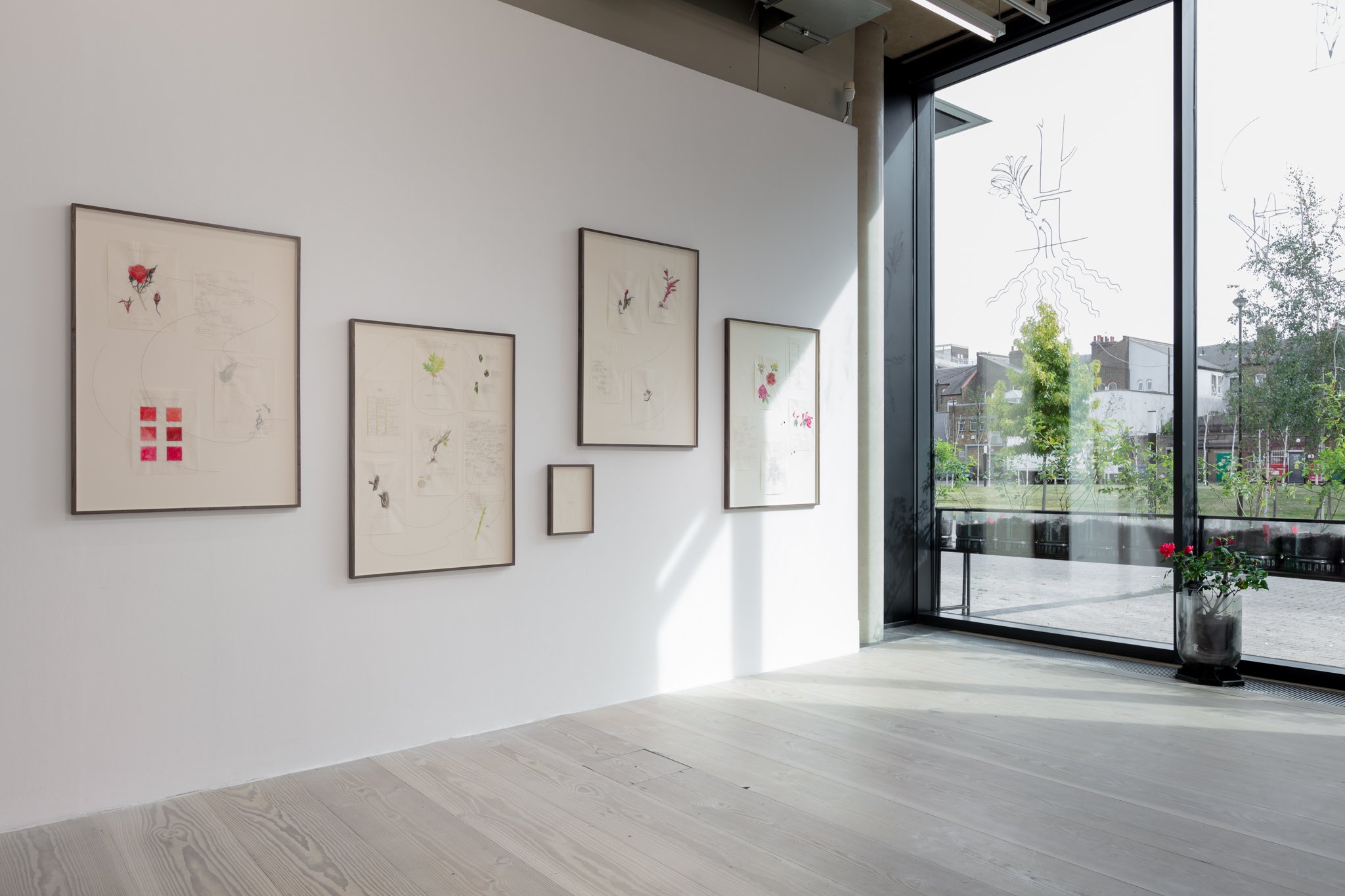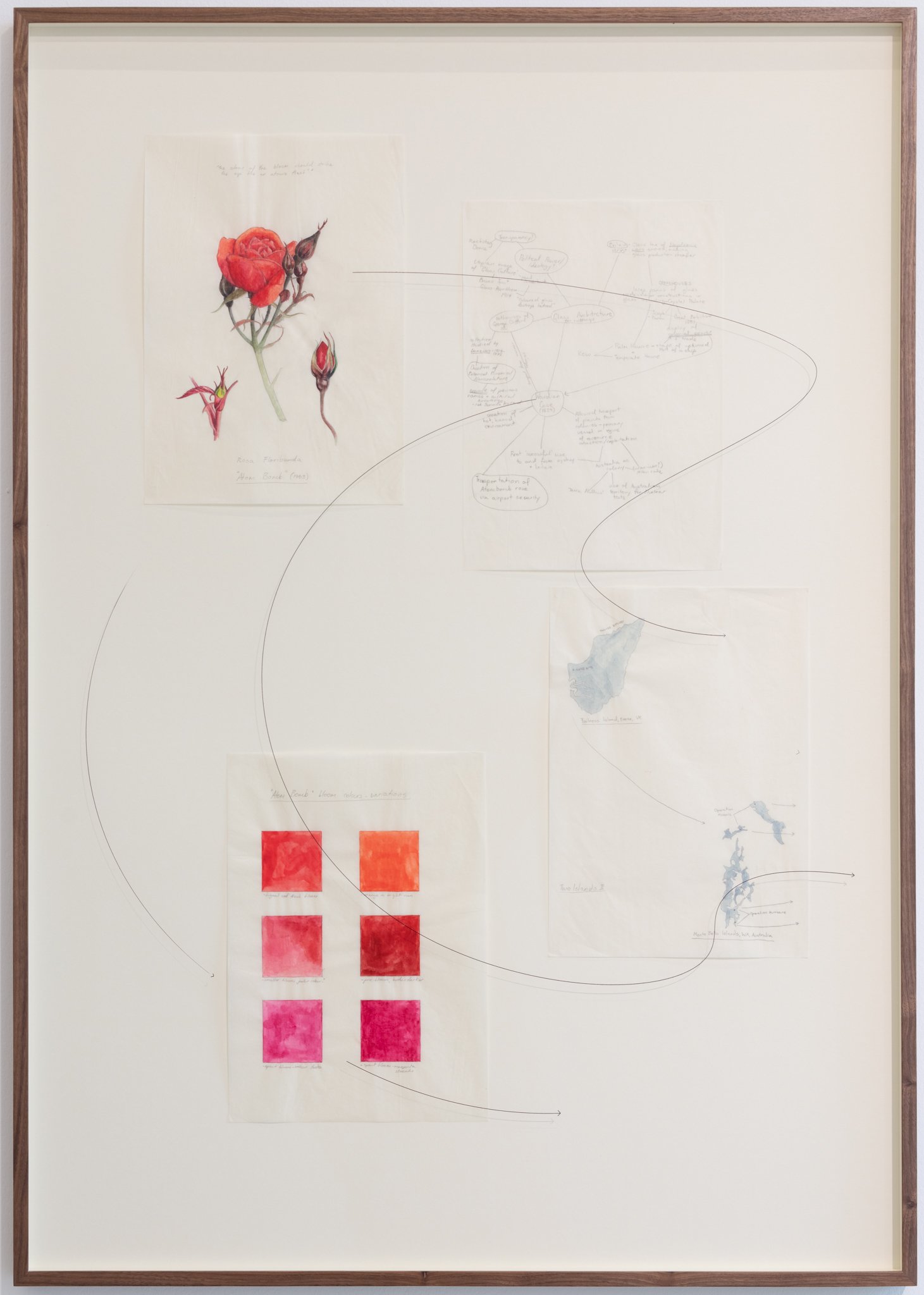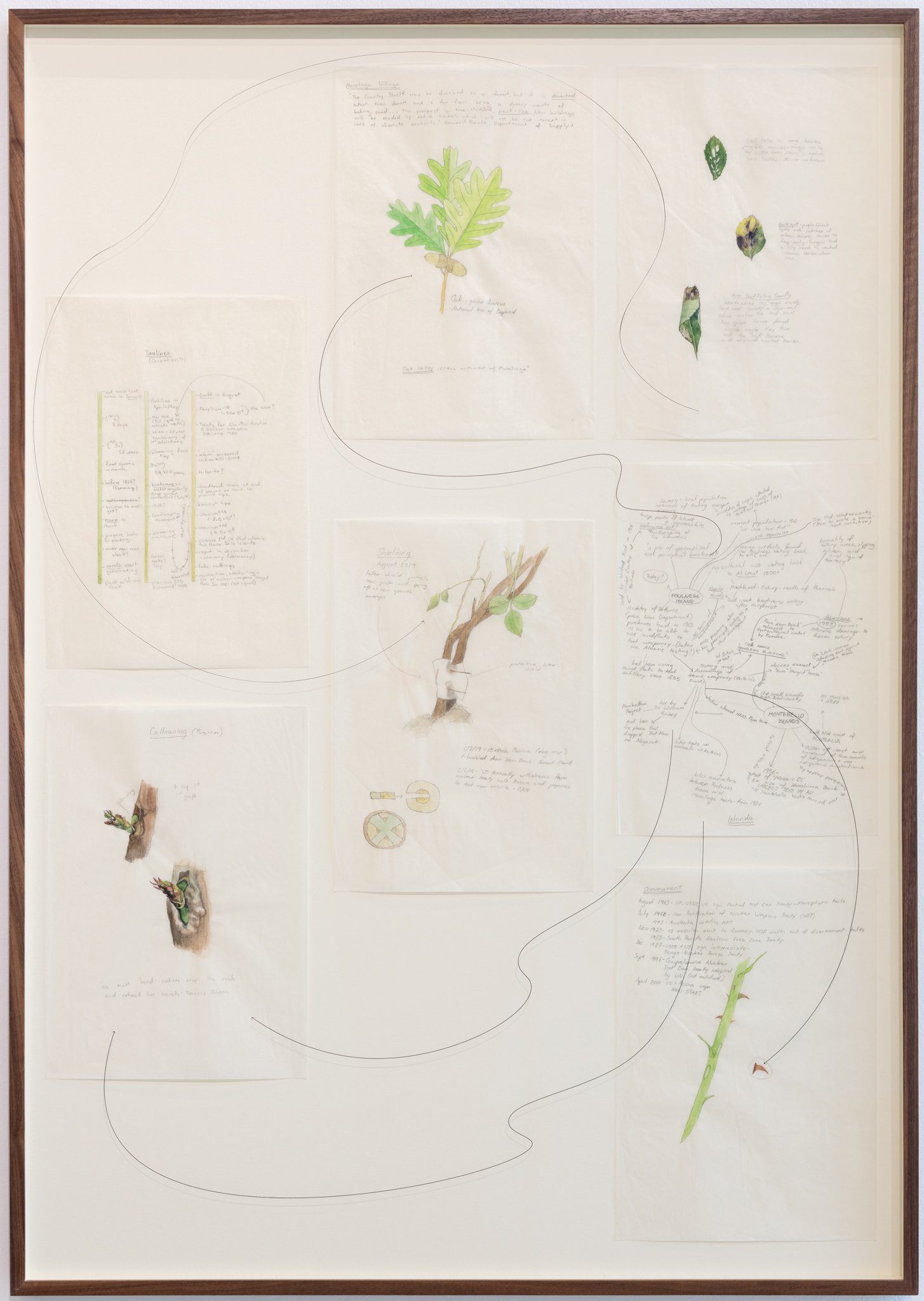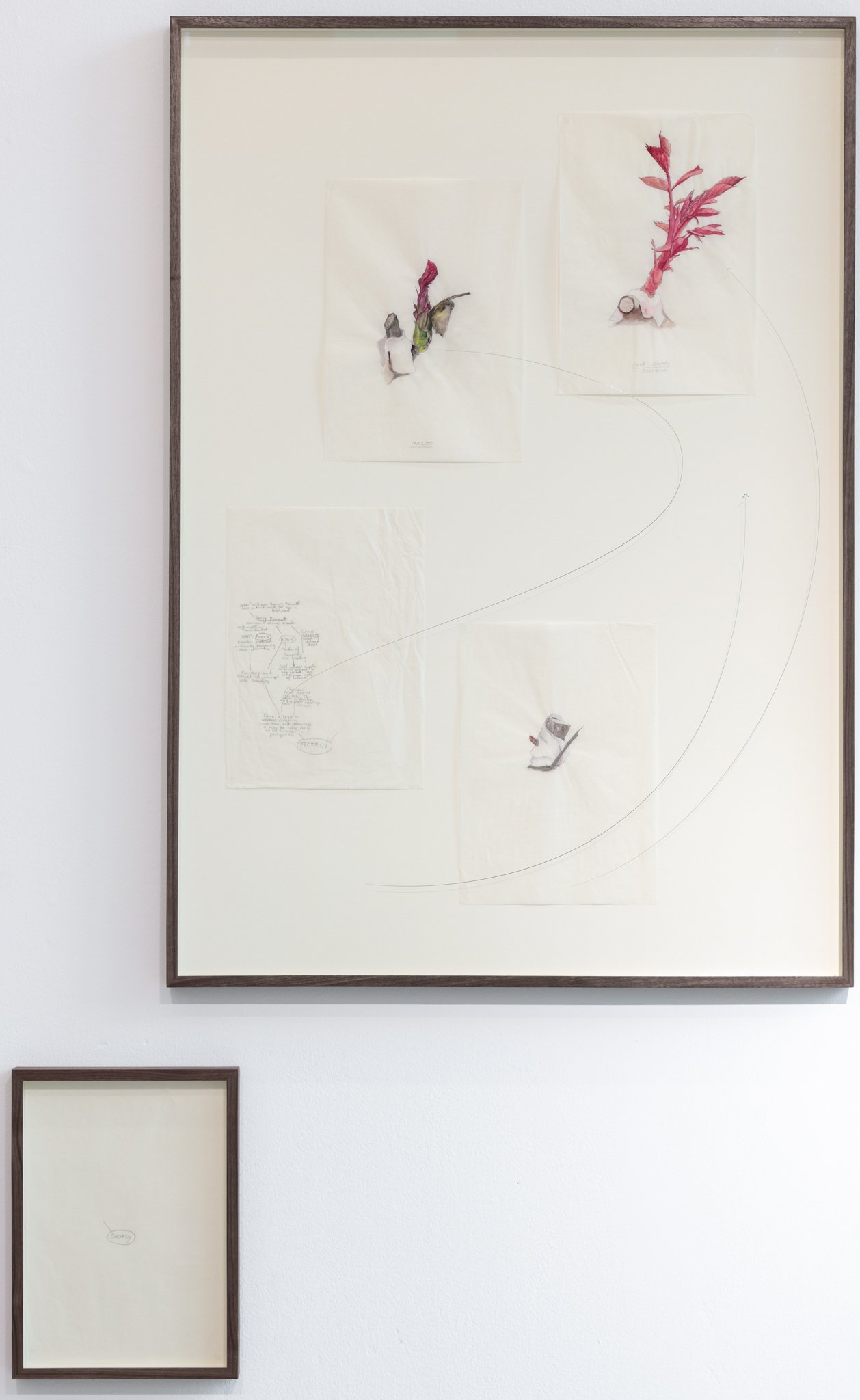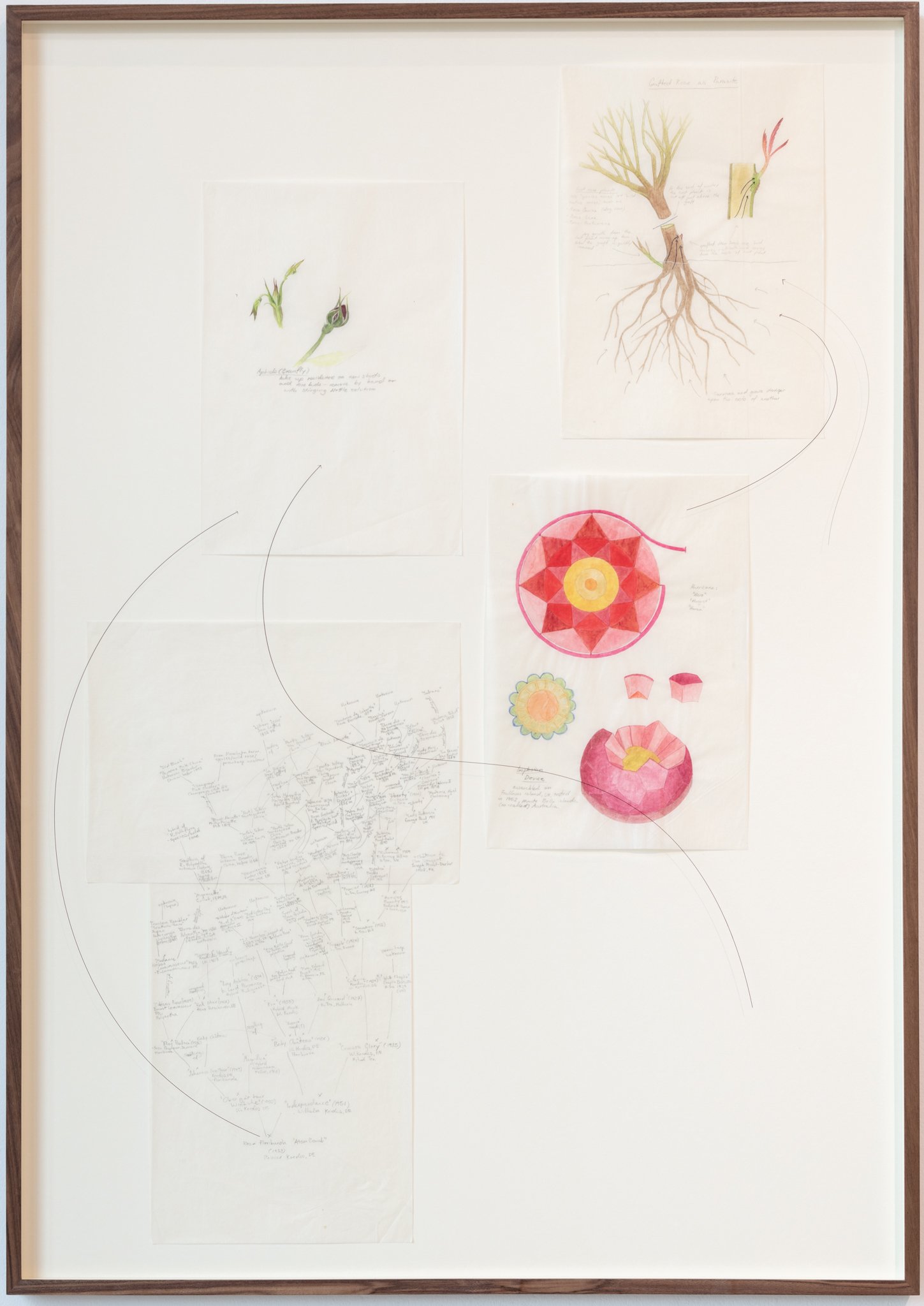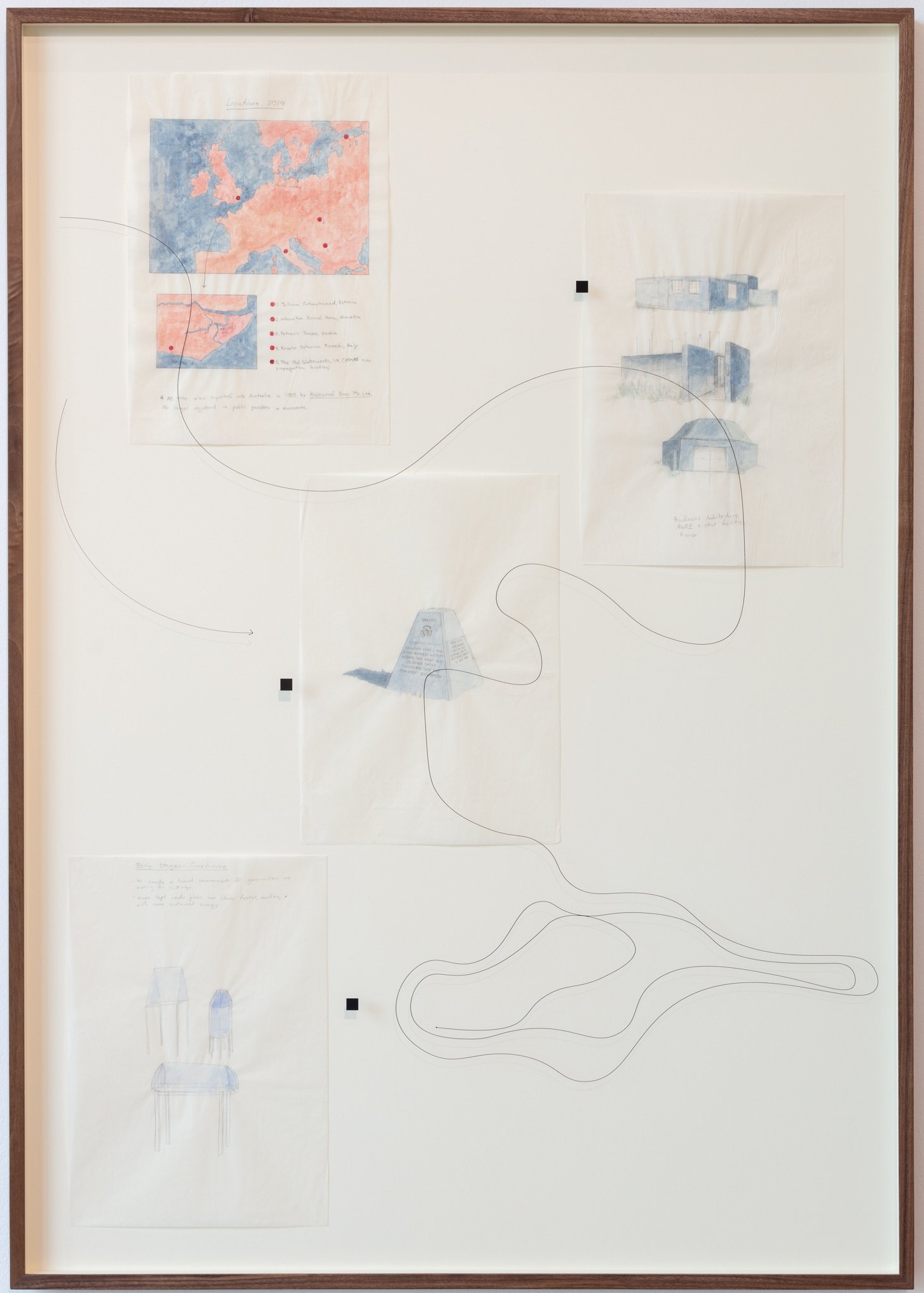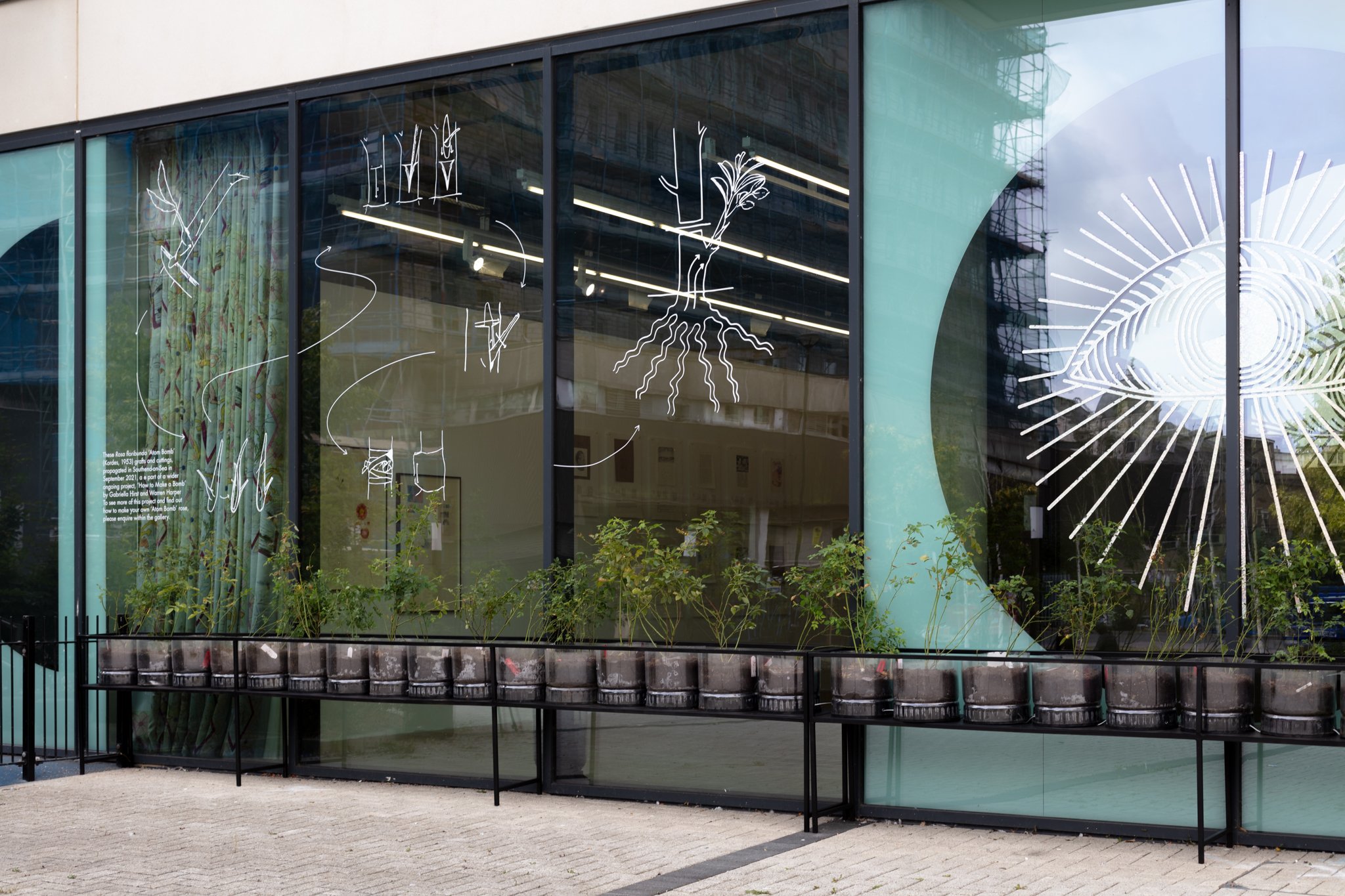How To Make A Bomb (HTMAB) is a durational gardening project by artist Gabriella Hirst, examining the structural connections between horticulture, state power, and nuclear colonialism.
About
‘How to Make a Bomb’ centres on a rare species of garden rose, the Rosa floribunda ‘Atom Bomb’, which was developed by German rose breeder Reimer Kordes in 1953 during the height of post-war nuclear fervour, whilst nuclear nations were furiously developing and testing new, devastating atomic weaponry.
Through processes of grafting and taking cuttings, ‘How to Make a Bomb’ sees artist Gabriella Hirst propagate new specimens of this rose from one of the few remaining plants of the original species, and teaching others how to do the same through ‘How to Make a Bomb’ public workshops and printed manuals. New ‘Atom Bomb’ roses are distributed throughout British and European gardens through guerrilla gardening, public grafting and community workshops.
Since 2019, the ‘How to Make a Bomb’ project has been hosted by The Old Waterworks (TOW), in collaboration with myself. TOW is poignantly in close proximity to Foulness Island and the former Foulness Atomic Weapons Research Establishment, where test weapons bound for Maralinga and the Monte Bello Islands were developed in the 1950s.
‘How to Make a Bomb’ Workshop
with Radar at Loughborough University
To mark the planting of an ‘Atom Bomb’ rose as part of Loughborough University’s arts collection, Gabriella Hirst and I hosted a rose grafting workshop, inviting participants to graft their own ‘Atom Bomb’ rose using plant material brought from The Old Waterworks’ garden.
An English Garden
‘An English Garden’ is the Estuary 2021 iteration of ‘How to Make a Bomb’.
‘An English Garden’ is a two-part commission: a garden bed installation and a newly published book. ‘Atom Bomb’ roses are installed in a formal English Garden, just upriver from Foulness Island at Gunners Park, Shoeburyness, which is former MOD land and is now a nature reserve under the care of Essex Wildlife Trust. Siting ‘How to Make a Bomb’ at TOW and Gunners Park is a way to reflect upon the history of the role of Essex in Britain’s nuclear colonial legacy and its ongoing impact. The newly propagated ‘Atom Bomb’ roses of ‘An English Garden’ are edged, to the south-east, by an arch of white ‘Cliffs of Dover‘ Iris (Fry, 1952).
image credit: Connor Turansky
The book compiles both written investigations and a visual essay of watercolour botanical drawings, mind maps, garden plans and diagrams. ‘An English Garden’ speculates upon possible links between the British Imperial programme of ‘gardening the world’, the enduring impact of nuclear colonialism, and the political symbolism of plants, focussing namely on the cultivated rose plant as a highly manipulated ornamental species weighed down by powerful and contradictory meaning. You can purchase the book here.
‘An English Garden’ publication detail. Image credit: Design Print Bind.
The formal layout and beds of ‘An English Garden’ echo the floor plans of Foulness’s nuclear heritage architecture, and the aerial maps of the Australian contaminated test sites. The garden is a reminder that the red rose of England and the English garden is entangled with a violent past of gardening the world, which has continued into a dangerous present.
Sadly the ‘An English Garden’ installation was forcibly removed prematurely. You can read the statement from the TOW board and staff here.
Commissioned as part of Estuary 2021 through a partnership between The Old Waterworks and Metal, with additional funding from Arts Council England Project Grants.
Rose Garden Conference
The Rose Garden Conference was a one day forum of talks which brought focus upon two seemingly opposed topics: gardening and global armaments, inviting artists, writers and theorists from different global locations to share their insights into both the nuclear and the botanical. The event took its name from the press conferences held in the Washington White House gardens in 2020, as a starting point for considering the subtle and overt ways in which plants and gardens are inextricably involved in the theatre of political powerplay, as witnesses, players and tools. The event had a specific focus upon nuclear armaments and Britain’s nuclear history in Australia.
Tip of the Iceberg
As part of the group exhibition ‘Tip of the Iceberg’ Gabriella Hirst exhibited Sub Rosa and hosted a ‘How to Make a Bomb’ workshop.
‘Sub Rosa’, meaning ‘under the rose’ (a Latin phrase denoting confidentiality and secrecy, used to define political meetings where what is discussed remains off-the-record) is a body of work exploring connections between community gardening, the red rose of England, and historical and enduring violence of nuclear ammunition as part of an ongoing botanical research project, centred on a rare species of garden rose developed in the 1950s, called the Rosa floribunda ‘Atom Bomb’. Sub Rosa, brings together mind maps, family trees, botanical drawings and drafting notes, overlayed with nuclear fallout maps from the 1950s.
The workshop consisted of a performative lecture by Gabriella followed by a workshop where participants learnt how to graft their own ‘Atom Bomb’ roses.
The plants propagated and disseminated from the ‘How to Make a Bomb’ workshop were grafted from the roses forcibly removed from ‘An English Garden’.
image credit: Anna Lukala




